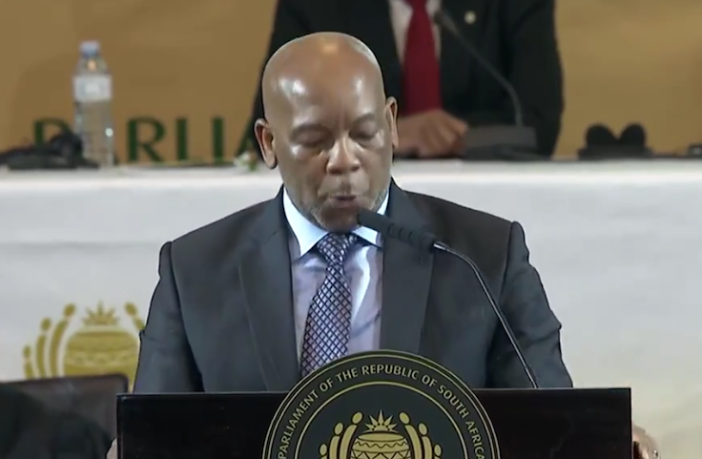- South Africa’s Minister in the Presidency for Electricity, Dr Kgosientsho Ramokgopa, says despite “obstacles, uncertainties and temporary setbacks”, the end of load shedding is in sight.
- He was addressing the State of the Nation Address (SONA) debate held at the Cape Town City Hall on Tuesday.
- The South African government has functioned as a one-party dominant democracy under the African National Congress (ANC) which has enabled political elites to accrue tremendous power, wealth, and influence through corruption, patronage, and clientelism.
- As a result, the country’s state owned and state run energy utility, Eskom, has deteriorated to the point where it has unsustainable debt in excess of R420 billion and cannot meet the country’s energy demand.
- Households and business’s face up to 10 hours of rotational blackouts daily.
“[The] path to achieving a stable and sustainable energy landscape has been fraught with obstacles, uncertainties, and temporary setbacks and yet, with each passing day, we continue to register progress as we chart the path to energy security.
“The end of load shedding is indeed in sight; the future is bright,” he said.
Related news: The electricity minister with no power – Ramokgopa
The Minister explained the steps government, in cooperation with Eskom, has taken to urgently address the energy challenge in the country including returning units to service on time or earlier and bolstering new generation capacity.
“Units 1 to 3 of Kusile [Power Station], which had been out of service since October of 2022, were successfully returned ahead of schedule. As planned, Unit 5 was synchronised to the grid in December 2023, contributing 800MW. The four Kusile Units collectively injected 3200MW of capacity into the grid.
“Medupi [Power Station] Unit 4 will return to service this year in September, a year ahead of schedule. Kusile Unit 6 will be synchronised in late November 2024. These units will add 1600MW to the grid. In addition, Unit 2 of Koeberg [Power Station] will return to service in September 2024, giving us 980MW following a planned outage. These interventions will collectively add 2580MW to the grid in 2024. The end of load shedding is indeed within sight,” he said.
Added to this, Eskom’s rigorous maintenance plan for power stations has been implemented, which Ramokgopa said is expected to ensure that “going into the winter of 2024, the fleet’s reliability will have been significantly strengthened”.
“This also means that heading into the winter peak demand period, we can claw back up to 2 000MW by tapering planned maintenance and strengthening available capacity.
“From March of 2024, we will begin reducing planned maintenance from the current 6 000MW to 5 000MW in April 2024 and to around 3 500MW in May 2024, a threshold that will be sustained during the winter demand period,” he said.
Ramokgopa revealed that to further bolster future energy security, Eskom is in the process of appointing a team which is expected to “undertake a procurement process for partners to develop the Richards Bay Closed Cycle Gas Turbine”.
This is a plan to yield a further 3 000MW for the grid.
Furthermore, the procurement of nuclear energy is also on the table.
“Gas will increasingly feature prominently in our short- to medium-term base load requirements. Eskom is working on converting Gourikwa and Ankerlig [power stations]to gas from diesel on the Open Cycle Gas Turbine (OCGT) technology. This initiative is anticipated to yield an additional 2 000MW, with a further 1 000MW expected from the conversion to Closed Cycle Gas Turbines (CCGT).
“[Government] will commence the procurement process of an additional 2 500MW of new nuclear capacity this year on an affordable scale and pace basis, as well as 1 500MW of pump storage facility at Tubatse in Limpopo,” Ramokgopa said.
Author: Bryan Groenendaal
Partial content source: SAnews.gov.za















